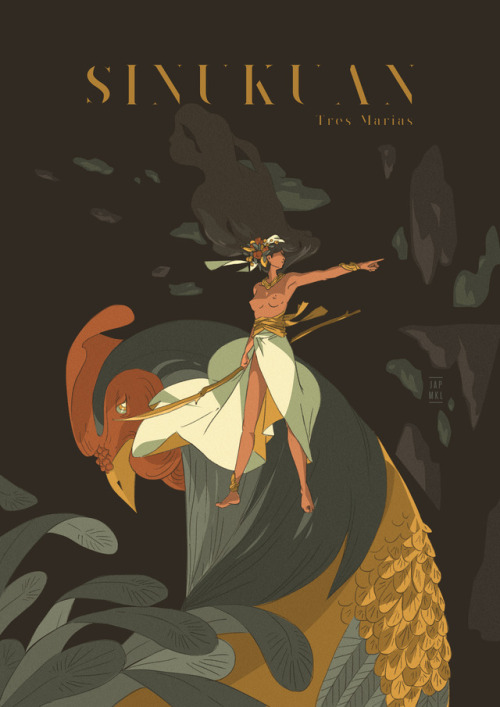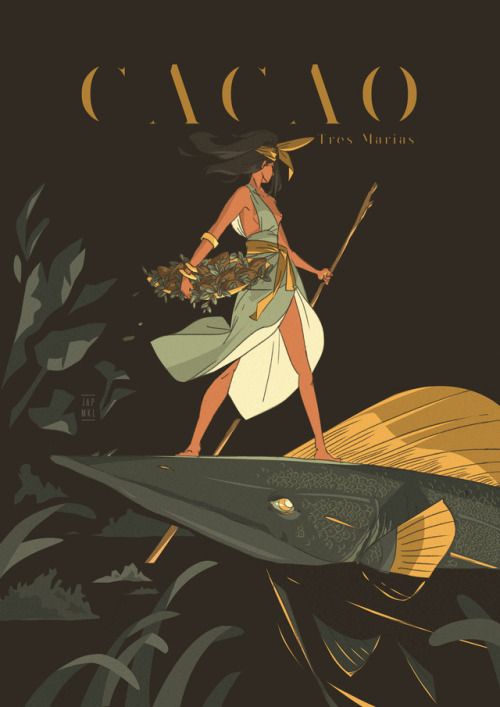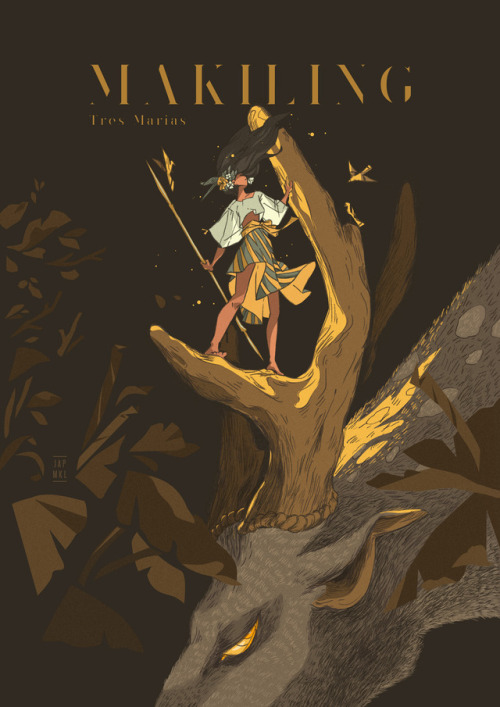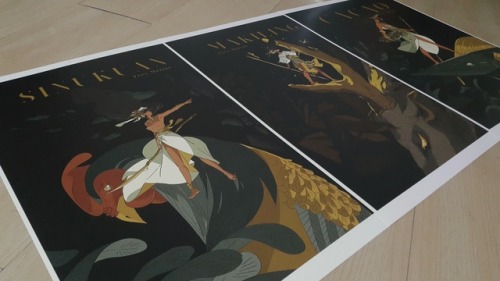“bes Fishbol Po Ako With An F”

“bes Fishbol po ako with an F”
More Posts from 120delyn and Others




Tres Marias: The Mountain Diwatafolk of Las Islas
Maria Sinukuan The eldest of the Three Diwata sisters and protector of her domain, Mount Arayat. One of her legend tells that she had a demon suitor who desired her hand. She gave him a test to prove his worth – to build a stone bridge without any support overnight. When the demon has almost accomplished his task, Sinukuan sabotaged the test by telling the rooster to crow early before dawn. The demon gave up, thinking that he failed.
Maria Cacao
The second of the Diwata sisters and protector of the Visayan dark woods where Chocolate Trees grow. It was believed that when the river overflows, Cacao is travelling through the river on a golden barge to personally deliver dark fruits to the river gods.
Maria Makiling The protector of her domain, Mount Makiling and the youngest among the Diwata sisters. She was also the most popular because she was more benevolent and curious of people than her sisters. She once fell in love with a hunter that caused wrath from Sinukuan. Her eldest sister reminded her of their duty as a Diwata and falling in love means leaving their mountain domains vulnerable. After realizing that the mountain needs her more, she appeared to the hunter one night – to break his heart. The unbearable pain in her heart caused her to vanish and never appeared to anyone from then on.

My Folktober drawing for today is the Philippine diwata, or faery, Maria Makiling. Historically referred to as Dayang Masalanta, Maria Makiling is the guardian spirit of Mt. Makiling. She is regarded as protector of the mountain and its people, and is called upon to stop earthquakes, storms, and flooding.

JUNE : Celebrating the month of Philippine Independence with this drawing.
Entitled: HARANA (meaning “to court through serenading”).
![PHILIPPINE MYTHOLOGY MEME | [1/4 LEGENDS + 1/3 LOCATION] THE LEGEND OF MARIA MAKILING + HER MOUNTAIN](https://64.media.tumblr.com/ae505afa5cf920f9e2f1a4bbcf210e44/tumblr_ndm0r4fsJX1sn5v3to2_500.png)
![PHILIPPINE MYTHOLOGY MEME | [1/4 LEGENDS + 1/3 LOCATION] THE LEGEND OF MARIA MAKILING + HER MOUNTAIN](https://64.media.tumblr.com/3e2ae99d01be6a3d732ee69b809d7a14/tumblr_ndm0r4fsJX1sn5v3to1_500.png)
PHILIPPINE MYTHOLOGY MEME | [1/4 LEGENDS + 1/3 LOCATION] THE LEGEND OF MARIA MAKILING + HER MOUNTAIN DOMAIN
Maria Makiling, sometimes spelled Mariang Makiling, in Philippine Mythology, is a diwata or lambana (fairy or forest nymph) associated with Mount Makiling in Laguna, Philippines. She is the most widely known diwata in Philippine Mythology. Maria Makiling is the guardian spirit of the mountain, responsible for protecting its bounty and thus, is also a benefactor for the townspeople who depend on the mountain’s resources. In addition to being a guardian of the mountain, some legends also identify Laguna de Bay - and the fish caught from it - as part of her domain.
It is often said that Mount Makiling resembles the profile of a woman, said to be Maria herself. This phenomenon is described as true from several different perspectives, so there is no single location associated with this claim. The mountain’s various peaks are said to be Maria’s face and two breasts, respectively, and her hair cascades downwards a gentle slope away from her body.
The most common story is that of Maria turning ginger into gold to help one villager or the other. In these stories, Maria is said to live in a place known to the villagers, and interacts with them regularly. The villager in question is often either a mother seeking a cure for her ill child, or a husband seeking a cure for his wife. The wise Maria recognizes the symptoms as signs not of disease, but of hunger brought about by extreme poverty. She gives the villager some ginger, which, by the time the villager gets home, has magically turned to gold In versions where the villager is going home to his wife, he unwisely throws some of the ginger away because it had become too heavy to carry. In some versions, the villagers love her all the more for her act of kindness. In most, however, greedy villagers break into Maria’s garden to see if her other plants were really gold. Distressed by the villager’s greed, Maria runs away up the mountain, her pristine white clothing soon becoming indistinguishable from the white clouds that play amongst the trees on the upper parts of the mountains.






Filipino Mythology Week → Day 4: Myths/Folk Tales
The “Maria” Diwatas


“Ang Munting Sirena” (late post)
now is the little mermaid’s turn. trying to simplify everything as possible and not putting any tattoos or any Filipino ethnic charms just to show she’s a Filipino mermaid. Their culture is unknown.and yes, she still has her mermaid hair when she transformed into human.

Vampires & Vampire Hunters but make it about during the late 1800s in the Philippines

tw // blood, body horror
“Honora…“
“Not now, Benito! We've just uncovered—-“
“No…look!”
🥀🐦⬛🧛🍂
Tropical gothic my beloved i am SO back 🩸 decided to make a fake book cover about filipino monster hunters solving mysteries together








Maria Clara at Ibarra | Period Costumes 19th century Philippines
-
 120delyn reblogged this · 3 months ago
120delyn reblogged this · 3 months ago -
 120delyn liked this · 3 months ago
120delyn liked this · 3 months ago -
 deartulantula liked this · 1 year ago
deartulantula liked this · 1 year ago -
 redtippedfox liked this · 2 years ago
redtippedfox liked this · 2 years ago -
 kindnessinmonsters reblogged this · 3 years ago
kindnessinmonsters reblogged this · 3 years ago -
 lilmissjolly liked this · 3 years ago
lilmissjolly liked this · 3 years ago -
 skeleton-mischief liked this · 3 years ago
skeleton-mischief liked this · 3 years ago -
 defty-picklez liked this · 3 years ago
defty-picklez liked this · 3 years ago -
 kos-ire liked this · 4 years ago
kos-ire liked this · 4 years ago -
 shythalia liked this · 4 years ago
shythalia liked this · 4 years ago -
 mgahinugotnadila reblogged this · 4 years ago
mgahinugotnadila reblogged this · 4 years ago -
 pingoes liked this · 4 years ago
pingoes liked this · 4 years ago -
 hellofriend reblogged this · 4 years ago
hellofriend reblogged this · 4 years ago -
 hellofriend liked this · 4 years ago
hellofriend liked this · 4 years ago -
 starfell-wanderer reblogged this · 4 years ago
starfell-wanderer reblogged this · 4 years ago -
 st4rboy7 liked this · 4 years ago
st4rboy7 liked this · 4 years ago -
 androidwithangerissues liked this · 4 years ago
androidwithangerissues liked this · 4 years ago -
 himawaricollection reblogged this · 5 years ago
himawaricollection reblogged this · 5 years ago -
 bloomgemstonia liked this · 5 years ago
bloomgemstonia liked this · 5 years ago -
 robkil liked this · 5 years ago
robkil liked this · 5 years ago -
 afskdhalahdyjfk liked this · 5 years ago
afskdhalahdyjfk liked this · 5 years ago -
 kermitcrimes liked this · 5 years ago
kermitcrimes liked this · 5 years ago -
 fryderyk liked this · 5 years ago
fryderyk liked this · 5 years ago -
 aphrodite-moon98 liked this · 5 years ago
aphrodite-moon98 liked this · 5 years ago -
 theixwyn reblogged this · 5 years ago
theixwyn reblogged this · 5 years ago -
 space-arco-iris liked this · 5 years ago
space-arco-iris liked this · 5 years ago -
 autumnlover2018 liked this · 5 years ago
autumnlover2018 liked this · 5 years ago -
 anonymous--anonymous liked this · 5 years ago
anonymous--anonymous liked this · 5 years ago -
 master-of-metal99 liked this · 5 years ago
master-of-metal99 liked this · 5 years ago -
 enigma-corner reblogged this · 6 years ago
enigma-corner reblogged this · 6 years ago -
 achangelingtale liked this · 6 years ago
achangelingtale liked this · 6 years ago -
 maganne-bonete reblogged this · 6 years ago
maganne-bonete reblogged this · 6 years ago -
 maganne-bonete liked this · 6 years ago
maganne-bonete liked this · 6 years ago -
 chibithedemonic liked this · 6 years ago
chibithedemonic liked this · 6 years ago -
 evan-aadland liked this · 6 years ago
evan-aadland liked this · 6 years ago -
 puddimilk liked this · 6 years ago
puddimilk liked this · 6 years ago -
 vinato71 liked this · 6 years ago
vinato71 liked this · 6 years ago -
 eonkedwuff liked this · 6 years ago
eonkedwuff liked this · 6 years ago -
 glueblade liked this · 6 years ago
glueblade liked this · 6 years ago -
 mrdreamsandreality reblogged this · 6 years ago
mrdreamsandreality reblogged this · 6 years ago

Mutifandom (Mouthwashing Brainrot) || Fanart & OCs if I'm not lazy lol
80 posts




